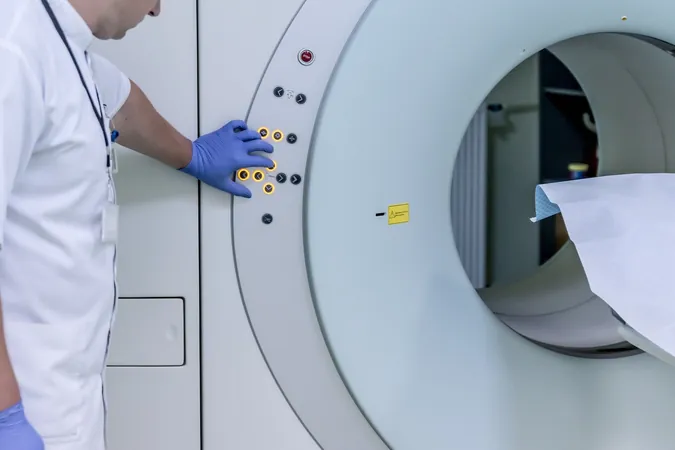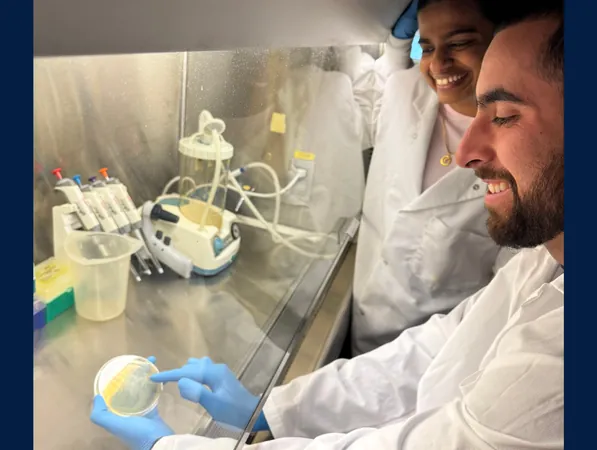
Breakthrough Discovery: How MRI Contrast Agents May Secretly Harm Your Health!
2025-04-05
Author: Wei
Groundbreaking Study Reveals Alarming Health Dangers
A groundbreaking study by researchers at the University of New Mexico has uncovered alarming insights into the potential health dangers posed by gadolinium, a toxic rare earth metal commonly used in MRI scans. Led by the distinguished Dr. Brent Wagner, the research reveals a surprising connection between a common food component—oxalic acid—and the formation of hazardous nanoparticles within human tissues.
Potential Health Complications Linked to MRI Contrast Agents
Published in the journal *Magnetic Resonance Imaging*, the research highlights the formation of these nanoparticles, which have been linked to severe health complications, particularly affecting the kidneys. Dr. Wagner warns, "The most concerning condition caused by MRI contrast agents is nephrogenic systemic fibrosis," a debilitating disease that can lead to skin thickening, heart issues, and painful joint contractures. Shockingly, some patients have even succumbed after receiving just a single dose of contrast.
The Role of Gadolinium in MRI Scans
Typically, gadolinium-based contrast agents are administered to enhance image clarity during MRI scans. While most individuals experience no adverse effects, previous studies have raised red flags, showing the presence of gadolinium particles in the kidneys and brain, as well as detectable levels in the blood and urine, even years post-exposure. This revelation raises pressing questions: Why do some patients experience severe reactions while most remain unaffected?
Connection Between Oxalic Acid and Metal Toxicity
According to Dr. Wagner, nearly half of those affected had been exposed to gadolinium only once, suggesting that an unseen factor amplifies the risk. The team’s research points to nanoparticle formation as a potential explanation for this alarming trend. "When a cell encounters these foreign metallic nanoparticles, it triggers a strong immune response," he explains.
Oxalic Acid: A Double-Edged Sword
The study draws attention to oxalic acid—a molecule prevalent in various plant-based foods like spinach, rhubarb, nuts, and chocolate. While it's beneficial in many ways, scientists have found that it can bind with metals, potentially leading to the creation of kidney stones and now, concerningly, nanoparticles of gadolinium. Moreover, it can also form in the body after consuming vitamin C-rich foods or supplements.
Experimental Findings on Gadolinium Precipitation
In controlled experiments, the researchers demonstrated that even minute amounts of oxalic acid could lead to the precipitation of gadolinium from contrast agents, enabling it to infiltrate the cells of various organs. Dr. Wagner theorizes that individual metabolic differences might determine whether someone forms these dangerous nanoparticles. "It could be related to their physiological state or their levels of oxalic acid, explaining the dire symptoms in some individuals while others go unscathed," he stated.
Future Directions and Recommendations
This vital discovery signals new opportunities for reducing the risks associated with MRI scans. Dr. Wagner advises against consuming vitamin C before undergoing an MRI with contrast due to its reactive properties with gadolinium.
Creating a Patient Registry for Further Research
Moreover, the research team is ambitiously creating an international patient registry, aiming to identify individuals who may be most susceptible to the adverse effects of gadolinium. This initiative will collect biological samples—blood, urine, fingernails, and hair—to further investigate accumulations of gadolinium in the body, potentially paving the way for targeted interventions.
Conclusion: Importance of Awareness
As we unearth more about the intricate relationship between diet, metabolism, and health risks associated with medical imaging, one thing is certain: being informed could save lives. Stay tuned for more updates as this research evolves and could lead to groundbreaking recommendations for patients needing MRI scans.



 Brasil (PT)
Brasil (PT)
 Canada (EN)
Canada (EN)
 Chile (ES)
Chile (ES)
 Česko (CS)
Česko (CS)
 대한민국 (KO)
대한민국 (KO)
 España (ES)
España (ES)
 France (FR)
France (FR)
 Hong Kong (EN)
Hong Kong (EN)
 Italia (IT)
Italia (IT)
 日本 (JA)
日本 (JA)
 Magyarország (HU)
Magyarország (HU)
 Norge (NO)
Norge (NO)
 Polska (PL)
Polska (PL)
 Schweiz (DE)
Schweiz (DE)
 Singapore (EN)
Singapore (EN)
 Sverige (SV)
Sverige (SV)
 Suomi (FI)
Suomi (FI)
 Türkiye (TR)
Türkiye (TR)
 الإمارات العربية المتحدة (AR)
الإمارات العربية المتحدة (AR)